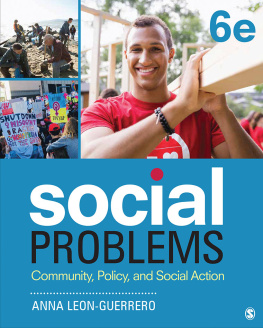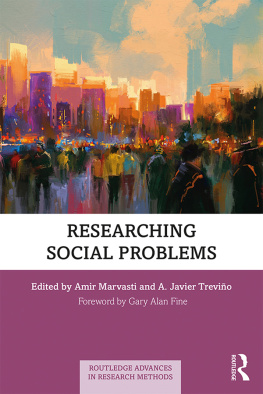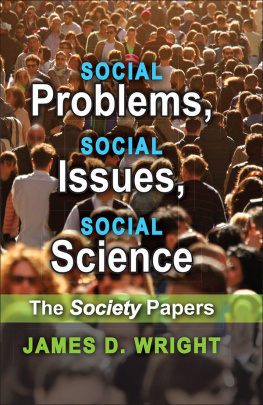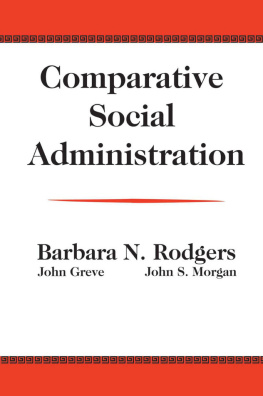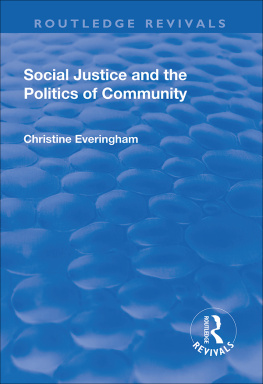p.xxviii
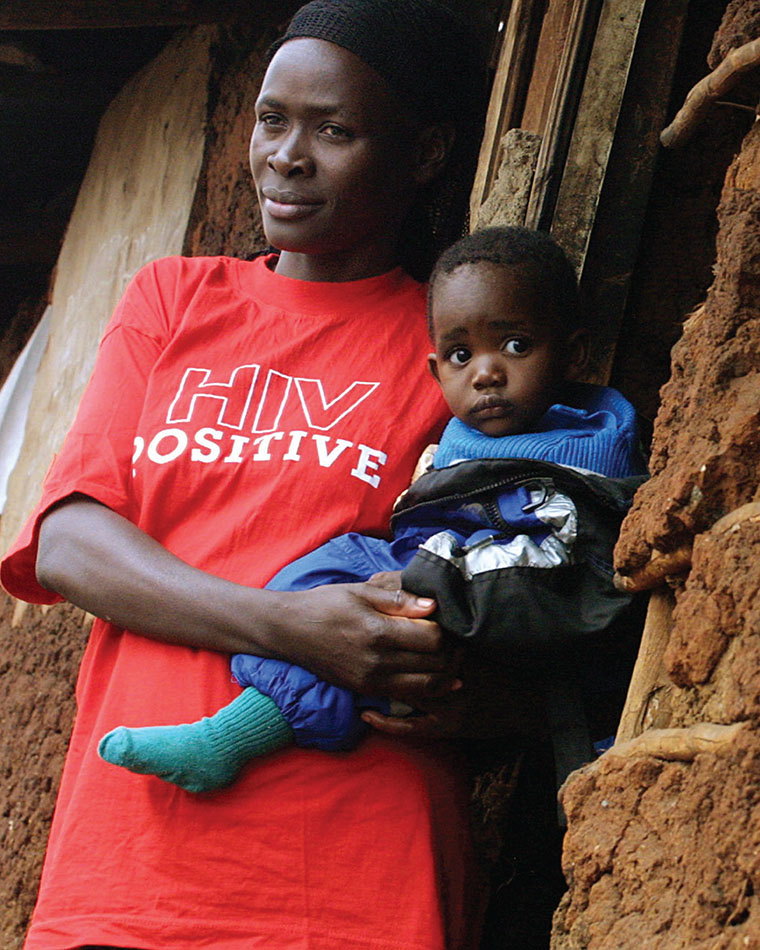
TONY KARUMBA/AFP/Getty Images
p.1
| SOCIOLOGY AND THE STUDY OF SOCIAL PROBLEMS |
Media Library
CHAPTER 1 Media Library
PREMIUM VIDEO
SAGE CORE CONCEPTS

AP NEWS CLIPS

LEARNING OBJECTIVES
Define the sociological imagination.
Identify the characteristics of a social problem.
Compare the four sociological perspectives.
Explain how sociology is a science.
Identify the role of social policy, advocacy, and innovation in addressing social problems.
If I asked everyone in your class what they believe is the most important social problem facing the United States, there would be many different answers: income inequality, racism, terrorism, or health care. Most would agree that some or all of these are social problems. But which is the most important, and how would we solve it?
Suppose I asked the same question in a South African college classroom. AIDS is likely to be one of the responses from South African college students. According to UNAIDS (2017), 36.7 million adults and children worldwide were living with HIV and 1.8 million people became newly infected with HIV in 2016. Africa remains the epicenter of the pandemic, with more than 19.4 million HIV-infected adults and children (refer to ). However, effective risk-reduction strategies, along with new treatments for HIV/AIDS, have saved countless lives in the United States. During the early 1980s, nearly 150,000 Americans were infected with the disease each year, but by the early 1990s, the number of new cases of infection had dropped to 50,000 per year. In 2014, there were an estimated 37,600 new HIV infections (Centers for Disease Control and Prevention 2007, 2013, 2017).
TABLE 1.1 Number of Individuals Living With HIV, Regional Data for 2016

Source: UNAIDS 2017.
Note: The total number of HIV infections is 36.7 million. HIV infection data for the Caribbean (310,000) and Middle East and North Africa (230,000) are not reported in the table.
Globalization , defined as the process of increasing transborder connectedness (Hytrek and Zentgraf 2007)whether economically, politically, environmentally, or sociallyposes new challenges and opportunities for understanding and solving social problems. We cannot understand the nature of social problems by simply taking a national or local perspective. Taking a global perspective allows us to look at the interrelations between countries and their social problems (Heiner 2002). We are not the only country to experience social problems. Knowledge based on research to understand and policies to address social problems in the United States could be applied in other countries, and what other countries have learned based on their social problems could be applied in the United States. Finally, we all need a little help from our neighborswe can increase our connectedness and goodwill with other countries through implementing solutions collaboratively rather than alone. So what do you think? Is HIV/AIDS in South Africa a problem only for South Africans, or is it also a problem for those living in the United States?
p.2
What Does It Mean to Me?
What do you consider to be the most important social problem? Explain the reasons for your answer.
This is how we spend much of our public conversationon the Senate floor, on afternoon talk shows, at work, or in the classroomarguing, analyzing, and trying to figure out which problem is most serious and what needs to be done about it. In casual or sometimes heated conversations, we offer opinions about the economy, terrorism, climate change, or appropriate policies for the African AIDS pandemic. Often, these explanations are not based on firsthand data collection or on an exhaustive review of the literature. For the most part, they are based on our opinions and life experiences, or they are just good guesses.
What this text and your course offer is a sociological perspective on social problems. Unlike any other discipline, sociology provides us with a form of self-consciousness, an awareness that our personal experiences are often caused by structural or social forces. Sociology is the systematic study of individuals, groups, and social structures. A sociologist examines the relationship between individuals and society, which includes such social institutions as the family, the military, the economy, and education. As a social science, sociology offers an objective and systematic approach to understanding the causes of social problems. From a sociological perspective, problems and their solutions dont just involve individuals; they also have a great deal to do with the social structures in our society. C. Wright Mills (1959/2000) first promoted this perspective in his 1959 essay, The Promise.
USING OUR SOCIOLOGICAL IMAGINATION
According to Mills, the sociological imagination can help us distinguish between personal troubles and public issues. The sociological imagination is the ability to link our personal lives and experiences with our social world. Mills (1959/2000) described how personal troubles occur within the character of the individual and within the range of his immediate relationships with others (p. 8), whereas public issues are a public matter: some value cherished by publics is felt to be threatened (p. 8). As a result, the individual, or those in contact with that individual, can resolve a trouble, but the resolution of an issue requires public debate about what values are being threatened and the source of such a threat.
Lets consider unemployment. One man unemployed is his own personal trouble. Resolving his unemployment involves reviewing his current situation, reassessing his skills, considering his job opportunities, and submitting his rsums or job applications to employers. Once he has a new job, his personal trouble is over. However, what happens when your city or state experiences high levels of unemployment? What happens when there is a nationwide problem of unemployment? This affects not just one person but, rather, thousands or millions. A personal trouble has been transformed into a public issue. This is the case not just because of how many people it affects; something becomes an issue because of the public values it threatens. Unemployment threatens our sense of economic security. It challenges our belief that everyone can work hard to succeed. Unemployment raises questions about societys obligations to help those without a job.
p.3
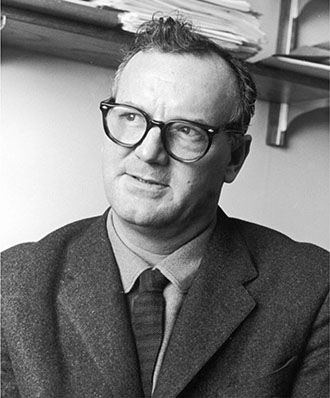
Archive Photos/stringer
A key distinction between a personal trouble and a public issue is how each one can be remedied. According to C. Wright Mills, an individual may be able to solve a trouble, but a public issue can be resolved only by society and its social structures.
We can make the personal troublepublic issue connection with regard to another issue, one that you might already be aware of, that is, the cost of higher education. In 2014, during a rally at Floridas Coral Reef High School, President Barack Obama announced an initiative to help students complete the federal student aid application form, part of an effort to broaden access to higher education. Coral Reef senior David Scherker, an aspiring filmmaker, was in the audience. At the time, David was waiting to hear about the status of his admission to several colleges and universities, including Florida State University and University of Southern California. He worried about his financial aid offers and whether he would be able to attend the school of his choice (NPR 2014). Is this a personal trouble facing only David? Or is this a public issue?

